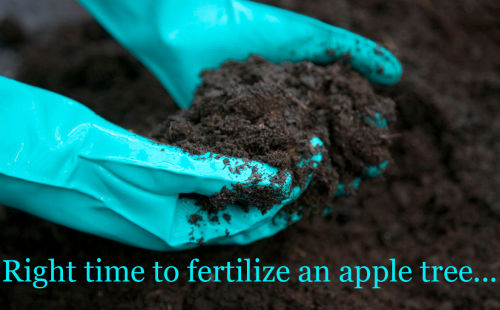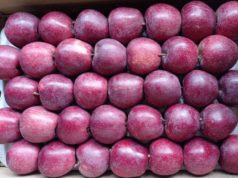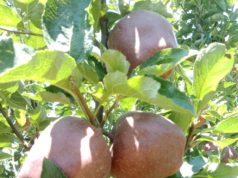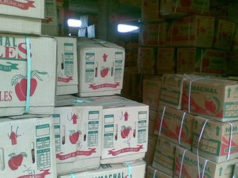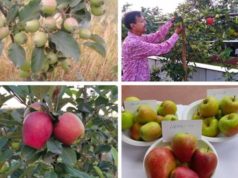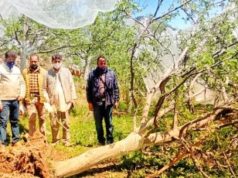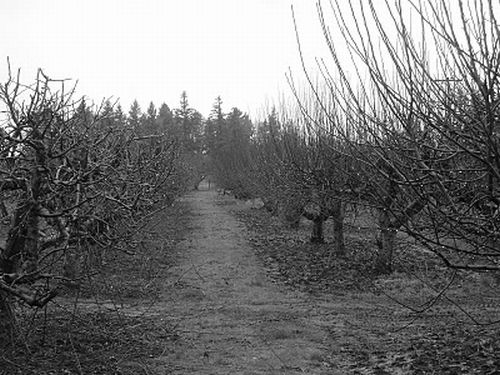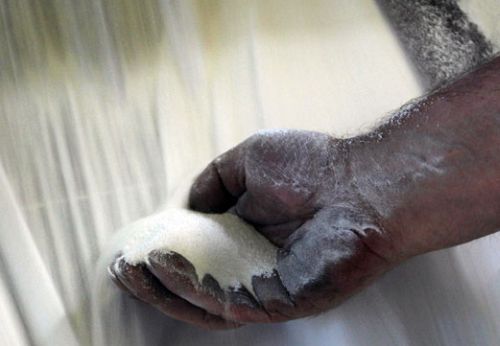Optimum apple tree growth and quality require optimum fertility. Different tree species have their own unique requirements thus it’s important to provide them with enough nutrition as per their needs. Most of Himachal Pradesh’s apple growers are not exactly aware of the right time of adding fertilizers to apple trees and are also unaware of the quantity they should use in what kind of tree. With the lack of knowledge growers in the state end up with poor crops and even end up with damaged trees, which die due to too much or too little nutrition.
Apple trees need nutrients to live, grow and produce crops. Due to a deficiency of nutrients in the soil, tree growth is affected adversely and becomes prone to disease and pest problems. The nutrients required by most plants on earth, including apple trees, can be divided into two parts: macro-nutrients and micro-nutrients, which are based upon the measure necessary for survival and growth. Macro-nutrients are required by plants in greater quantities than micro-nutrients. The macro-nutrients required by plants for growth include nitrogen (N), phosphorus (P), potassium (K), calcium (Ca), magnesium (Mg), and sulfur (S). The addition of micro-nutrients, especially nitrogen, can result in improvised growth while deficiencies can lead to slower growth and many visible symptoms. Micro-nutrients, which are required in very small amounts, include iron (Fe), manganese (Mn), zinc (Zn), copper (Cu), boron (B), chlorine (Cl), and molybdenum (Mo).
Both organic and inorganic (synthetic) fertilizers can be used to supply plant nutrients.
How to decide the need for fertilizers?
Trees are often under high-stress conditions due to many reasons which depend on environmental conditions e.g. low moisture availability, soil compaction, physical damage and competition from nearby trees, shrubs and weeds. The best indicator of whether fertilization is necessary is a soil test.
In cases where soil tests cannot be done, the best indicator of the need for more fertilization of established trees is shoot growth. If new shoot growth occurring in the present year is in excess of 6 inches, then fertilization is probably unnecessary. If shoot growth is between 2 and 6 inches then fertilizer may be applied and, if shoot growth is less than 2 inches, then growers need to apply proper fertilizer in their plants.
Foliage colour is another indicator of the need for fertilization. Yellow or “off-colour” leaves may show the need for fertilization as these symptoms generally occur on trees which are not taking up enough of one or more required nutrients. A final indicator of the need for fertilization is the history of the farm. Trees on farms that are fertilized on a regular basis rarely need to have supplemental fertilizer applied. Supplemental fertilizer should only be considered if shoot growth is less than 2 inches, or if a soil test reveals a specific nutrient deficiency.
Yellowing may be due to a variety of nutrient deficiencies. The most common reason for yellowing foliage is a lack of iron and occasionally manganese. Deficiencies of these elements are commonly due to a high pH (7.0 or higher) and not a lack of these nutrients in the soil. Because different trees do well at different pH levels, it is strongly recommended that soils be checked for pH before planting.
Best time to fertilize Tree
Newly Planted Trees
Requires higher nitrogen until they are 3 years old, but care should be taken to apply nitrogen-based fertilizers on two conditions 1. Soil Test and 2nd is If growth in new trees is not normal e.g. new plant or its shoots should grow between 12 and 18 inches. Application of fertilizers can be done as broadcast or sprinkle (in ratio with soil test) or organic fertilizers manure, bone meal application can be done after every 90-120 days for good and stout growth. An important time for the application of fertilizer in new trees is March, June & September.
Matured Apple Trees
After Bud Break – Early Spring is the best time to fertilize mature trees or right as the flowers appear in the apple tree.
Early summer Fertilization – Can be done either depending on the deficiency or by looking at the growth of fruit and tree. Most of the horticulturists fertilize trees throughout the spring. Fertilizing in summer inhibits the tree’s ability to stay hydrated.
Post Harvest fertilization-Early in the new season deciduous plants rely on the nutrients stored from the previous autumn for flowering and to develop new leaves. Post-harvest fertilizer applications are often beneficial as they ensure adequate nutrient storage for the following spring. After harvest trees quickly cut water uptake and after leaf fall tree water use drops to almost nil. As a result, fertilizer uptake late in the season is slow and it pays to apply fertilizer as soon after harvest as possible. If applied too late for tree uptake, winter rainfall will leach any fertilizer residues from the soil or the tree will enter dormancy late.
How about fall and winter fertilizing?
Fertilization in the winter or at the time of leaf falling is ineffective as the tree is entering a dormant and not a growth period. In winter the tree goes into dormancy, it ceases photosynthesis. The chlorophyll in the leaves breaks down, making sugars that go back into the fruit tree’s limbs, trunk and roots. And thus fertilizing in winter is ineffective. Winters or Dormancy is the best time to apply manure than Water Soluble fertilizers.
When to Apply Manure – Apply 1 to 2 inches of well rotted-manure in February while the tree is still dormant and again in June. You should wait until the year after planting to start fertilizing. If you live in a warmer region with mild winters and little danger of frost zones 9 or 10 and up you can apply manure three times a year: in February, June and August.
Manure facts It doesn’t matter what kind of manure you use (horse, chicken, cow, rabbit or goat) but it needs to be well rotten. Well, rotten manure looks like black soil and has no smell. Never use fresh manure as it has high ammonia, which can give root burns and can damage trees. Well-rotten manure is considered an organic fertilizer and adds nitrogen, potassium and other nutrients to the soil. It also adds organic matter that helps loosen the soil, increases the oxygen content attracts earthworms and increases useful bacteria in the soil.
Manure Classifications
Organic manure– Organic manure is artificially prepared from plant residues and animal waste products. Animal dung is the best example of it and has been used for centuries as a fertilizer for farming, as it improves the soil structure (aggregation), so that it holds more nutrients and water, and becomes more fertile. Animal manure also encourages soil microbial activity, which promotes the soil’s trace mineral supply, improving plant nutrition. It also contains some nitrogen and other nutrients that assist the growth of plants.
Mixed manure – Animal dung mixed with other materials, such as straw or sawdust. While this type of dung may be good for composting –because of its rich blend of nitrogen and carbon.
Manure Age -Freshly produced manure often has ammonia that can hurt seedlings or plants. Ageing manure for 60 days or more, will allow harmful chemicals to break down, as well as for its nutrients to grow. Also, ageing minimizes the risk of E. coli bacteria.


